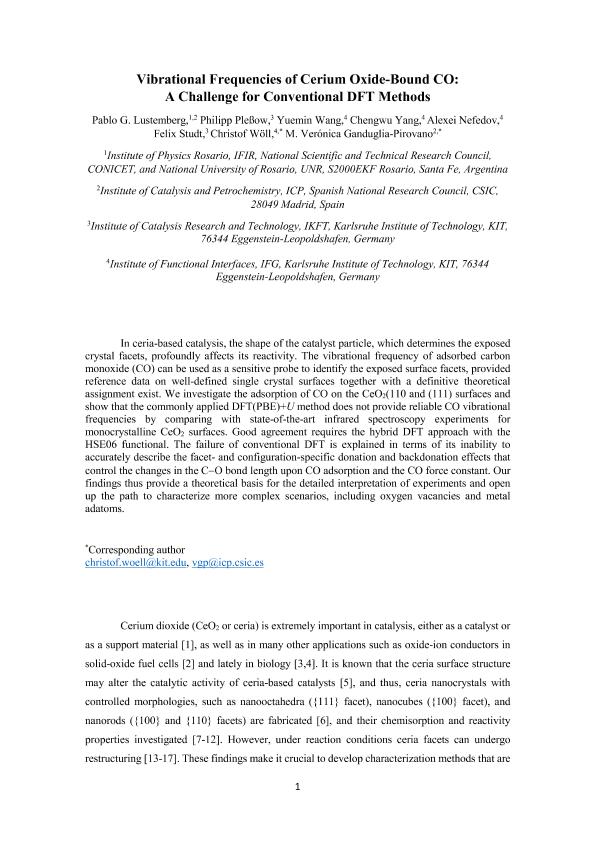Artículo
Vibrational Frequencies of Cerium-Oxide-Bound CO: A Challenge for Conventional DFT Methods
Lustemberg, Pablo German ; Plessow, Philipp N.; Wang, Yuemin; Yang, Chengwu; Nefedov, Alexei; Studt, Felix; Wöll, Christof; Ganduglia Pirovano, Maria Veronica
; Plessow, Philipp N.; Wang, Yuemin; Yang, Chengwu; Nefedov, Alexei; Studt, Felix; Wöll, Christof; Ganduglia Pirovano, Maria Veronica
 ; Plessow, Philipp N.; Wang, Yuemin; Yang, Chengwu; Nefedov, Alexei; Studt, Felix; Wöll, Christof; Ganduglia Pirovano, Maria Veronica
; Plessow, Philipp N.; Wang, Yuemin; Yang, Chengwu; Nefedov, Alexei; Studt, Felix; Wöll, Christof; Ganduglia Pirovano, Maria Veronica
Fecha de publicación:
12/2020
Editorial:
American Physical Society
Revista:
Physical Review Letters
ISSN:
0031-9007
Idioma:
Inglés
Tipo de recurso:
Artículo publicado
Clasificación temática:
Resumen
In ceria-based catalysis, the shape of the catalyst particle, which determines the exposed crystal facets, profoundly affects its reactivity. The vibrational frequency of adsorbed carbon monoxide (CO) can be used as a sensitive probe to identify the exposed surface facets, provided reference data on well-defined single crystal surfaces together with a definitive theoretical assignment exist. We investigate the adsorption of CO on the CeO2(110) and (111) surfaces and show that the commonly applied DFT(PBE)+U method does not provide reliable CO vibrational frequencies by comparing with state-of-the-art infrared spectroscopy experiments for monocrystalline CeO2 surfaces. Good agreement requires the hybrid DFT approach with the HSE06 functional. The failure of conventional density-functional theory (DFT) is explained in terms of its inability to accurately describe the facet- A nd configuration-specific donation and backdonation effects that control the changes in the Câ"O bond length upon CO adsorption and the CO force constant. Our findings thus provide a theoretical basis for the detailed interpretation of experiments and open up the path to characterize more complex scenarios, including oxygen vacancies and metal adatoms.
Palabras clave:
CO frequency shift
,
PBE+U
,
Hybrid calculation
,
IRRAS spectra
Archivos asociados
Licencia
Identificadores
Colecciones
Articulos(IFIR)
Articulos de INST.DE FISICA DE ROSARIO (I)
Articulos de INST.DE FISICA DE ROSARIO (I)
Citación
Lustemberg, Pablo German; Plessow, Philipp N.; Wang, Yuemin; Yang, Chengwu; Nefedov, Alexei; et al.; Vibrational Frequencies of Cerium-Oxide-Bound CO: A Challenge for Conventional DFT Methods; American Physical Society; Physical Review Letters; 125; 25; 12-2020; 1-7
Compartir
Altmétricas



